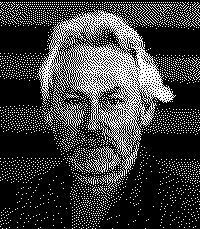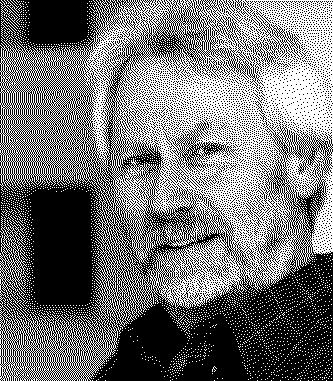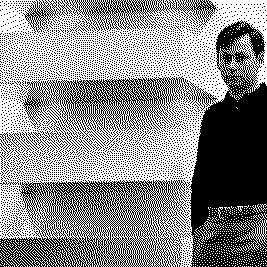Artists/Donald Judd
Fast Facts
Minimalist Philosophy
Judd's work embodies the minimalist ethos, emphasizing simplicity, clarity of form, and the absence of narrative. He sought to create straightforward, non-representational works that stood on their own without alluding to anything outside of their physical presence.
Industrial Materials and Processes
Unlike traditional sculptors, Judd frequently used industrial materials like steel, aluminum, and Plexiglas. He also employed industrial fabrication processes, which allowed him to achieve precise and geometric forms, a signature of his style.
Stacks, Boxes, and Progressions
Judd is best known for his series of "stacks," "boxes," and "progressions." These works often consist of identical geometric shapes repeated in a precise, orderly arrangement, exploring rhythm, repetition, and the relationship between the object, viewer, and space.
Site-Specific Installations
He created several large-scale, site-specific installations that were designed to interact with the surrounding environment. His works are known for their spatial harmony and the way they engage with their settings.
Chinati Foundation
In Marfa, Texas, Judd established the Chinati Foundation, a museum dedicated to his and his contemporaries' art. This site features large-scale installations and serves as a testament to his vision of integrating art, architecture, and nature.
Integration of Art and Living Space
Judd was also interested in the relationship between art, furniture, and architecture. He designed furniture and worked on architectural projects, blurring the lines between functional design and art.
Biography



Donald Judd, an American artist and critic, was a pivotal figure in the Minimalist movement, though he notably rejected this label for his work
Born on June 3, 1928, in Excelsior Springs, Missouri, Judd's journey into the art world was shaped by his studies in philosophy and art history at Columbia University and painting at the Art Students League. His military service in Korea from 1946 to 1947 marked an early chapter in his life before he embarked on his artistic career (Judd Foundation).
Judd's critical voice emerged in the late 1950s and early 1960s when he worked as an art critic, writing extensively and exploring the principles that would underpin his later work. By 1963, he had developed a core lexicon of forms, including "stacks," "boxes," and "progressions," focusing on the creation of "specific objects" that occupied a unique space between traditional painting and sculpture. His use of simple, repeated forms and industrial materials like metals, plywood, and Plexiglas sought to investigate space and how objects inhabit it. This approach was distinct in its avoidance of traditional sculptural techniques, instead employing fabrication methods that allowed for precision and repeatability (Wikipedia).
Judd's philosophy of art was significantly articulated in his 1965 essay "Specific Objects," where he outlined his rejection of traditional European art values such as illusion and represented space, advocating instead for art that exists in its own right, emphasizing the real space and the materiality of the object. This essay is often regarded as a foundational text for Minimalism, despite Judd's own reservations about the term (Encyclopedia Britannica).
His move from painting to three-dimensional work in the early 1960s marked a critical shift, leading to significant works that challenged and expanded the boundaries of sculpture. Judd's dedication to the autonomy and clarity of the constructed object led him to explore the relationships between object, viewer, and space, culminating in installations that demanded an experiential engagement from the viewer (Encyclopedia Britannica).
In 1968, Judd purchased a cast-iron building at 101 Spring Street in New York, marking the beginning of his interest in permanent installation spaces. This was a practice he extended to Marfa, Texas, where he established a large-scale installation and architectural project that continued until his death on February 12, 1994. These spaces not only housed his own work but also the works of others he respected, embodying his belief in the integration of art, architecture, and environment (Judd Foundation) (Wikipedia).
Throughout his career, Judd's work was characterized by a rigorous commitment to form and materiality. His avoidance of traditional artistic labels, his exploration of space and scale, and his contributions to the discourse of contemporary art cement his legacy as a critical figure in post-war American art.
Importance
Donald Judd's significance in the art world is multifaceted, spanning his pioneering contributions to Minimalism, innovative art criticism, and profound impact on contemporary art, architecture, and design.
Changing the Course of Sculpture
Judd is celebrated for his pivotal role in Minimalism, a movement that emerged in New York in the early 1960s. He was a key figure alongside Carl Andre, Dan Flavin, and Robert Morris, pushing sculpture towards geometric extremes. Judd's "stack" works, characterized by uniform, repeated units, activated negative space and merged painting, sculpture, and architecture, offering a new narrative in 20th-century art that was distinct from the figuration to abstraction trajectory seen in modernist painting (Artsy).
Beyond Abstract Expressionism
Judd and his minimalist contemporaries distanced themselves from Abstract Expressionism, which they viewed as overly expressive and focused on the artist's inner feelings. Instead, they favored pre-determined, repetitive objects that sought to be nothing more than what they were: pure forms. This marked a significant shift in American art, moving past the expressive legacy of Abstract Expressionism towards a "cooler," more objective approach (Artsy).
Art Criticism and Theoretical Contributions
Before becoming known as an artist, Judd was an influential art critic. His essay "Specific Objects" (1964) is among the most important texts explaining the priorities of Minimalist artists, advocating for art based on tangible materials and occupying a new space between painting and sculpture. Judd's criticism and theoretical writings have had a lasting influence on the understanding and direction of contemporary art (Artsy).
Influence on Contemporary Aesthetics
Judd's work has had a profound impact on contemporary architecture and design, influencing the aesthetics of everything from art museums and galleries to retail spaces like Apple stores. His minimalist approach, characterized by simplified geometric forms and the use of materials like metal and Plexiglas, continues to resonate in the design world (Artsy).
Innovations in Exhibition and Installation
Judd was meticulous about how his and others' works were exhibited, advocating for installations that adhered to the artist's specifications. His efforts culminated in the creation of the Chinati Foundation in Marfa, Texas, a space where art and environment are integrated according to his vision. This practice of site-specific installation, which Judd helped pioneer, has become a standard in contemporary art (Artsy) (Wikipedia).
Technique
Donald Judd, a pivotal figure in the Minimalist movement, developed a distinctive approach to art that emphasized simplicity, materiality, and spatiality.
Materials and Fabrication
Judd's artworks frequently utilized industrial materials such as steel, aluminum, Plexiglas, and concrete. He was known for his use of mill aluminum and concrete, creating works that engage with their environment and invite viewers to perceive space differently. His use of concrete, for instance, in large structures at the Chinati Foundation in Marfa, Texas, showcases his integration of form, space, art, and environment (The Art Story).
Spatial Concerns and Installation
Judd's pieces were often placed directly on the floor, which required viewers to encounter them in their physical space, contrasting with classical sculptures that were displayed on pedestals. This method emphasized the artwork's presence and its relationship with the surrounding environment (Art in Context).
Industrial Processes and the Rejection of Handcrafting
Judd's transition from painting to what he considered neither traditional painting nor sculpture involved the use of small fabricators and industrial processes. This approach was reflective of his belief that the method of creation was secondary to the artwork itself, as long as the outcome constituted art (Wikipedia).
Exploration of Color and Form
By the mid-1980s, Judd began working with enamel on aluminum, allowing him to expand his color palette beyond the natural hues of his earlier materials. This exploration of color and form was significant in his large-scale floor pieces and horizontal wall works, which exhibited unique variations of color and size (Wikipedia).
Permanent Installation
Judd advocated for the permanent installation of artworks, believing that temporary exhibitions could degrade art due to improper understanding or presentation by curators. His purchase of a five-story building in New York in 1968 marked the beginning of his efforts to create more stable settings for displaying his works (Wikipedia).
Printmaking
Judd also engaged in printmaking, utilizing techniques such as etching, aquatint, and woodcut, which was his primary medium. His prints explored similar formal and color challenges as his three-dimensional works (Art in Context).
Architecture and Furniture Design
Beyond his contributions to sculpture and printmaking, Judd applied his minimalist principles to architecture and furniture design. He designed practical items such as beds, chairs, and tables, initially using pine and later exploring other materials. His designs were driven by a combination of functionality and aesthetic consistency, maintaining a clear separation between his art and design works (Art in Context).









